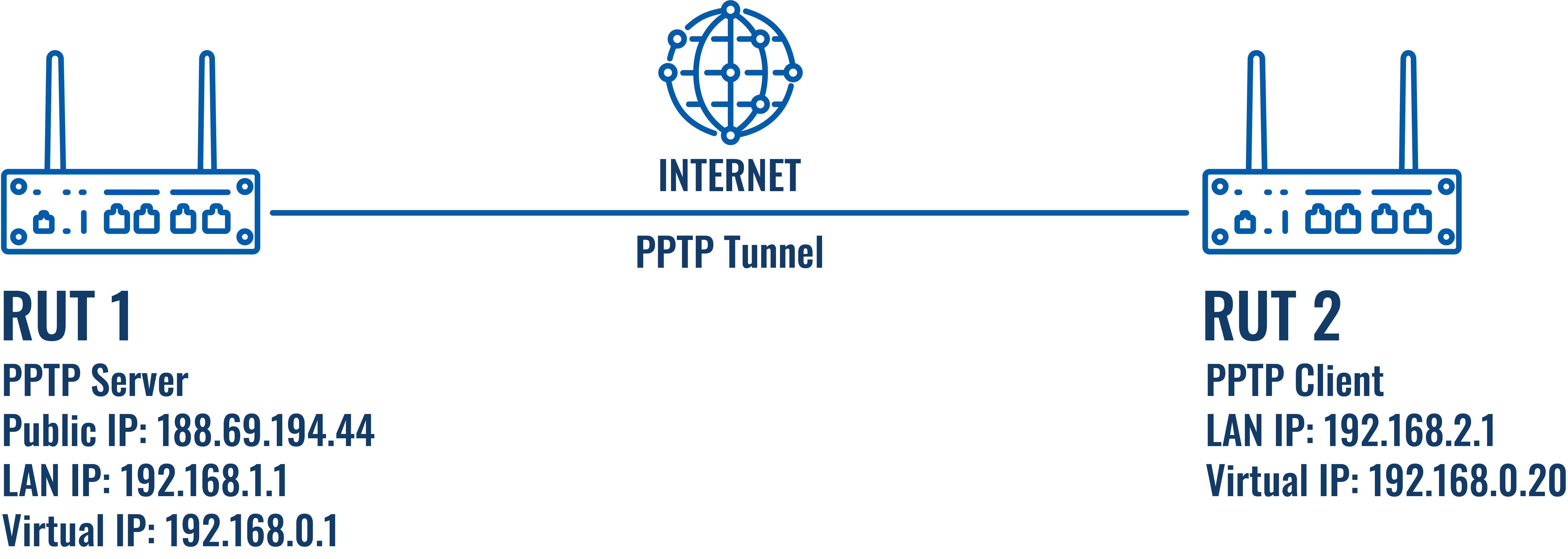PPTP configuration examples
Introduction
Point-to-Point Tunneling Protocol (PPTP) is Virtual Private Networks (VPN) protocol that uses a TCP control channel and a Generic Routing Encapsulation tunnel to encapsulate PPP packets.
This article provides an extensive configuration example of how to create a connection between a PPTP Server and Client, both of which configured on RUT routers.
Configuration overview and prerequisites
Before we begin, let's overview the configuration that we are attempting to achieve and the prerequisites that make it possible.
Prerequisites:
- Two RUT routers of any type (excluding RUT850)
- A SIM card with a Public Static or Public Dynamic IP address for the PPTP Server
- An end device (PC, Laptop, Tablet, Smartphone) for configuring the routers
Configuration scheme:
The configuration we are trying to achieve here is very basic, as indicated by the figure above. It concerns two RUT routers - RUT1 and RUT2. One functions as a PPTP Server, the other - a PPTP Client. They are connected into a virtual network via a PPTP Tunnel.
Router configuration
If you have familiarized yourself with the configuration scheme and have all of the devices in order, you can start configuring your routers using instructions provided in this section.
PPTP Server (RUT1)
First, lets configure the PPTP Server. As mentioned in the prerequisites section, the router that acts as the Server must have a Public Static or Public Dynamic IP address (more information on the subject can be found here) .

